It was in June 2017 during one of the opening Brexit negotiating sessions that Simon Case, currently Rishi Sunak's cabinet secretary, produced a copy of the Good Friday Agreement.
Case, a senior member of the UK team, believed Michel Barnier, the former French agriculture minister, and the European Commission officials present would need to be schooled in the complexities of the Belfast Agreement.
There were no Irish officials present: Dublin had outsourced its national interests to Barnier and his team.
"We will be sitting in a room full of people who are fast learners, but who didn't grow up with the [Northern Ireland situation]," one UK official present later told me. "The more they understand it the better."
However, Irish officials had, in fact, for months been giving European institutions and capitals a crash course on the Good Friday Agreement, and how Brexit would jolt its delicate constitutional and political balance.
Enda Kenny, the then Taoiseach, had briefed Angela Merkel in Berlin in July 2016, less than a month after the Brexit referendum. She raised the Northern Ireland issue in, of all places, Outer Mongolia during a G20 summit in August.
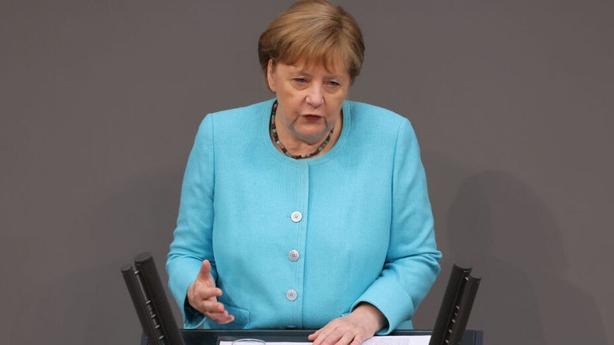
That same month a senior Irish diplomat circulated a "non-paper" to senior figures in the EU’s institutions, including Barnier, Didier Seeuws, the European Council’s point man on Brexit, and Jeppe Tranholm-Mikkelsen, the Council’s secretary general.
The paper set out Ireland’s concerns about Brexit. It emphasised the European dimension to the Good Friday Agreement, how it was one of the EU’s success stories in peace building, how it stood as "a positive example to other regions facing similar problems", and how the return of a hard border would have a devastating impact on Northern Ireland.
Looking back, the Belfast Agreement’s complex, interlocking constitutional arrangements did not lend themselves to straightforward explanation to outsiders.
The EU was not a signatory to the 1998 accord; its contribution was more financial and abstract. Yet, the European dimension helped, according to many observers. An ambient European identity was a useful add-on for those beginning to call themselves Northern Irish, rather than Irish or British.
When Michel Barnier had his first visit to Dublin in October 2016, ministers and Taoiseach Enda Kenny were taken aback by his detailed knowledge of the Good Friday Agreement (as a regional affairs Commissioner in 2000 he had spent time in Northern Ireland and met all the leading politicians).
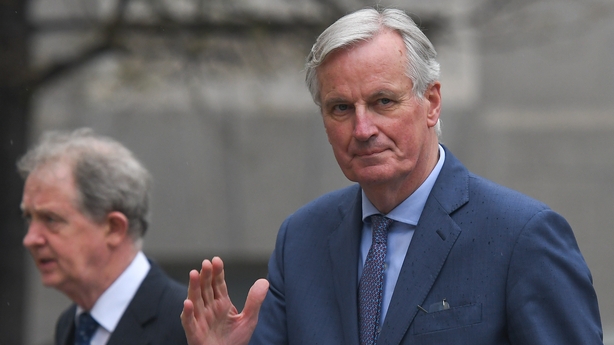
But even in October 2016, few could have anticipated how the Good Friday Agreement would become the huge legal and political hurdle which both shaped the outcome of Brexit and constrained the UK’s room for manoeuvre. It will arguably long continue to resonate through British post-Brexit law-making and how the EU and UK manage their relations.
Ultimately, both sides had different understandings of the Good Friday Agreement’s significance and of what had to be safeguarded. That mismatch would prove divisive and disruptive throughout six long years of negotiation.
Ireland argued a hard land border had to be avoided in order to preserve the peace agreement; the UK argued the east-west link and Northern Ireland’s place in the UK also had to be protected.
The tug-of-war dragged in issues about consent, about the all-island economy, and about unfettered trade between Northern Ireland and Great Britain. Both sides would tussle over who was the agreement’s true custodian in ways that would antagonise the other, and deepen the fractious political stalemate in the North.
No return to borders
At the outset, however, all sides insisted there be no return to the borders of the past.
At one point London even attempted to place the UK in the same camp as Ireland.
"On Northern Ireland the political objective is clear," said a senior UK diplomat in the early months of negotiations.
"No matter what we do elsewhere, we are committed to as seamless and as frictionless a border as possible. Pressure will come on the [European] Commission to balance the wishes of the UK and Ireland and the political wishes of the other 26 leaders around the [European] Council table."
Dublin was prickly about such talk. Ireland had to be firmly in the EU camp and avoid any attempt to bilateralise the problem. There was no shortage of voices in Irish political and farming circles in 2016 who were wondering if there could be a bilateral trade deal between Dublin and London to get around the mess that Brexit would create.
But Ireland had a natural advantage. The State was remaining in the EU so, when it came to it, European solidarity and sympathy would default to Dublin and not London.
That is not to say that Brussels was indifferent to unionism. However, there were three problems: Stormont had been in a state of collapse since January 2017, London was rigidly centralising its Brexit policies, and the DUP became more hardline after the confidence and supply arrangement to keep Theresa May in power.
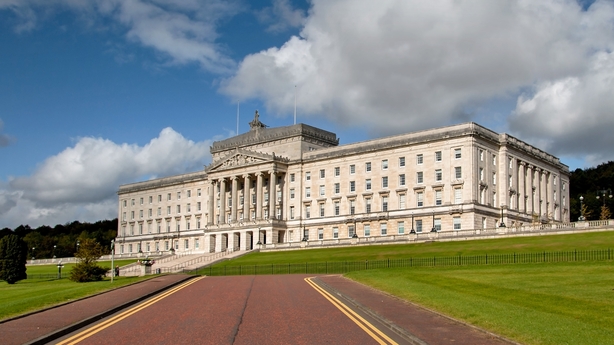
A member of Michel Barnier's team recalled a visit to the southern side of the border in 2017, looking across and sensing that the unionist part was missing from the equation.
"That’s a piece in the puzzle," the official confided.
"We haven’t spoken to anyone from the North yet, so that makes it a bit difficult to gauge the whole thing. We’re getting one part of the story as to the political situation and the desired solutions."
Northern Ireland politicians and businesses would eventually beat a path to Barnier’s door. His team would get a first hand sense of the problems if both North-South and East-West trade was disrupted.
Barnier frequently expressed frustration at the attitude of the DUP when they turned up in Brussels, however.
After one meeting on 9 October 2018 with then leader Arlene Foster and Diane Dodds MEP, Barnier wrote in his diary: "Listening to these two women, I had difficulty keeping calm and I wondered if Theresa May will have the courage and will not to give in to their orders.
"They are opposed to everything, and want nothing to do with the concrete proposals we are making."
Yet, Dublin did not have it all its own way either. According to a senior Commission official, speaking privately in December 2019, Irish officials had pushed to get as many of the Good Friday elements into the Withdrawal Agreement as possible, but faced resistance in Brussels.
"The Irish concern was generally to have as much of the wider Good Friday Agreement dimension in the [Northern Ireland] Protocol [of 2018] as possible," said the official.

"That posed some problems. Our reasoning was that the Withdrawal Agreement can only address matters of EU law.
"So, where there are things under the Good Friday Agreement, such as the rights chapter that aren’t themselves based on EU law, we didn’t want to overstep our mark and appropriate the Good Friday Agreement [in its entirety] into the Withdrawal Agreement."
The first key test of how far the EU would internalise Ireland’s interpretation of the Good Friday Agreement was April 2017, one month after Theresa May triggered the famous Article 50 of the Lisbon Treaty, notifying the EU of Britain’s intention to leave.
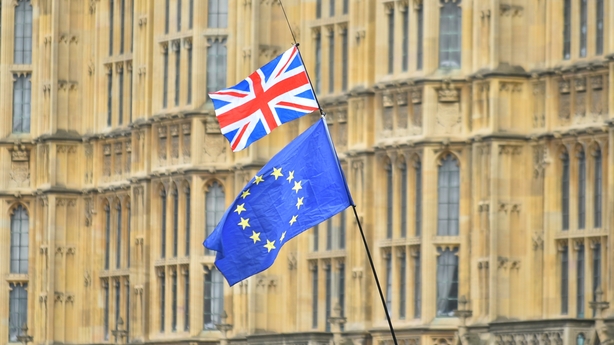
By this point Enda Kenny had halted work by Irish officials on technical solutions that might create a hi-tech land border. He was now determined that the UK take ownership of the Brexit implications for the island of Ireland and to forge a political solution.
At that April summit, EU leaders adopted their negotiating guidelines, the principles and objectives that Michel Barnier would bring into the divorce talks with David Davis.
There were 28 guidelines in total but the key one for Ireland was paragraph 11.
It stated that the EU had "consistently supported the goal of peace and reconciliation enshrined in the Belfast/Good Friday Agreement in all its parts" and would regard the "achievements, benefits and commitments" of the peace process as being of "paramount importance".
Dublin and Brussels had been working on the text paragraph for months. Ireland was pushing for more detail on "the unique circumstances on the island of Ireland" and what "flexible and imaginative solutions" would look like.
There was resistance from the EU side: officials preferred to focus on principle and objective, rather than construct a detailed roadmap.
"We did not want to go too far into that," a senior Council figure told me shortly afterwards.
"Both for reasons of economy of text but also because we thought it was a little bit too early. We would rather state the political determination, state where we want to end up, but without going too much in detail, in particular when it comes to the border issue."
In fact, every word of paragraph 11 was carefully chosen. EU institutions and member states were concerned about opening a can of worms over a very delicate constitutional arrangement, one that ended a bloody civil conflict, and one that was concluded between a country staying in the EU (Ireland) and one that was leaving (the UK).
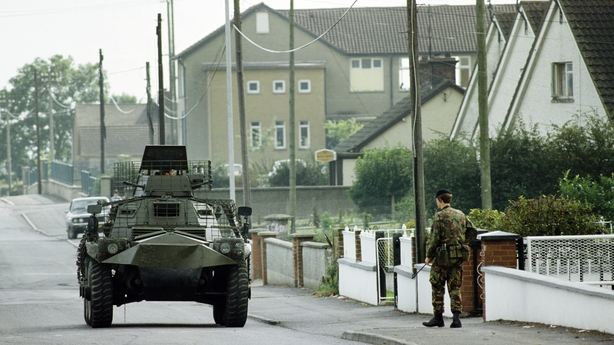
Ireland’s central argument was that the Good Friday Agreement had not just ended a sectarian war: it had created a zone of peace and prosperity on the island of Ireland that was an open-ended project. A hard border, whether it be customs or regulatory, would shatter that project.
Every word of the phrase "achievements, benefits and commitments" of the Good Friday Agreement was key for Dublin. The "achievements" related to the peace process so far; the "benefits" related to the gains enjoyed by both communities; the "commitments" were forward-looking: all parties to the GFA had committed to the zone of peace, human rights and prosperity on the island.
Although some member states were concerned about what the EU might be on the hook for when they saw the word "commitments" (would the EU be somehow implicated in advocating some constitutional change?), they were reassured that this was within the letter and spirit of the Good Friday Agreement (ie, the provision for a border poll) and were satisfied for the text to be concluded.
So, while Barnier’s negotiating guidelines were "owned" by EU leaders, the Good Friday Agreement paragraph was, in its shorter and more general form, essentially the Irish Government’s text.
Downing Street did not object.
What it did object to was another textual outcome from that April 2017 summit. It related to Irish unity.
In July 2016, Enda Kenny was attending the Irish National War Memorial at Islandbridge with Northern and UK political figures to mark the 100th anniversary of the Battle of the Somme when he was taken aside by Mark Durkan, the SDLP leader and a key architect of the Good Friday Agreement.
Durkan was worried that Brexit could scupper a key nationalist goal enshrined in the Agreement, that Irish unity was possible if a majority of people north and south desired it. Durkan reminded Kenny that the Agreement stated that both electorates should be able to express that desire freely and "without external impediment".
Durkan argued that Brexit might be an external impediment. This was because a unity vote could be complicated by the fact that Northern Ireland was no longer part of the EU, or that Ireland’s membership of the EU could be jeopardised if a unity referendum created an entirely new state.
Durkan and other figures like the former European Parliament president Pat Cox, and Ireland’s ambassador to the EU Declan Kelleher, raised a parallel with the reunification of Germany in 1990, through which an impoverished East Germany automatically became part of the EU.
In the run up to the April 2017 summit Kenny began speaking publicly about the East German precedent.
Dublin wanted a promise that Northern Ireland would automatically be part of the EU, just as the eastern part of Germany did, if there was a unity referendum, and officials wanted it included in the negotiating guidelines.
European Council officials were fearful, however, that it would antagonise London. British tabloids had been screaming blue murder (and former Tory leader Micheal Howard had threatened an armed flotilla) when Spain insisted on language in the guidelines about the status of Gibraltar.
In the end, after some last minute concerns, a text was agreed to Dublin’s satisfaction. It was placed not in the negotiating guidelines but in the minutes of the European Council meeting.
Diplomatic backlash
However, when London got wind of the text there was a diplomatic backlash.
Theresa May was in the middle of a turbulent general election, Scottish nationalists had the wind in their sails, and a highly toxic atmosphere in Westminster could not, Downing Street said, cope with any talk of the EU somehow enabling Irish unity.
There were frantic phone calls to Brussels and Dublin, but both capitals were standing firm. European Council officials slapped down London’s complaints. Enda Kenny refused to take a phone call from Theresa May.
Once the negotiating guidelines were agreed Dublin further tested London on its commitment to the Belfast Agreement. Was Theresa May’s government aware of the risks of Brexit to North-South cooperation? Were there elements of that cooperation which were facilitated or enhanced by the fact that EU rules applied on both sides of the border?
May agreed to what followed: a mapping exercise to look at every aspect of North-South cooperation to see where it might be jeopardised by the sudden disappearance of EU rules north of the border.
Again, European Commission officials involved in the mapping exercise were cautious.
"[North-South] cooperation in many areas was able to continue irrespective of Brexit," writes Stefaan de Rynck, Michel Barnier’s chief advisor in his recent book Inside the Deal: How the EU got Brexit done.
"But for some areas, the application of EU law in Northern Ireland looked indispensable. The EU team tried to cut down the number of such areas as much as possible, as it feared giving the impression of wanting to pull the UK into its regulatory orbit."
Yet, the exercise showed that mutual EU membership was vital for swathes of North-South cooperation and economic activity.
As De Rynck outlines, officials identified more than 150 sectors, from cross-border transport, to the regulation of pesticides, plant health, wood diseases, specialised oncology and cardiology healthcare, cross-border GP visits, organ transplants, trade in eels and cross-border taxi services to name a few.
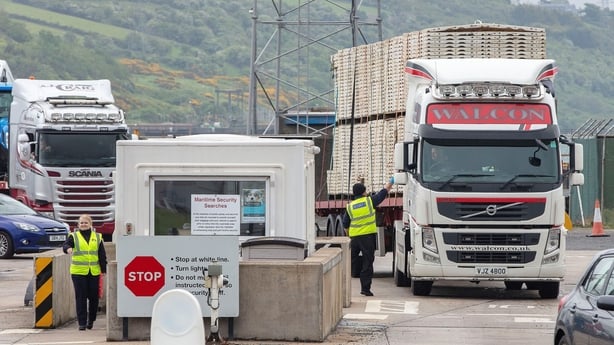
The UK’s chief negotiator David Davis insisted all this could be dealt with in the future relationship, not the divorce. Simon Case, one of his senior negotiators, believed otherwise and acknowledged that the mapping exercise had shown "the challenge of regulatory divergence" north and south once Brexit took effect.
Despite that, Davis insisted the mapping exercise be kept under wraps as it would antagonise unionists.
"The UK wanted the diagnosis to remain secret while a search for a cure went on," says De Rynck.
A cure was to be found, but it was a bitter pill for Theresa May and even more bitter for Arlene Foster. By December, 2017 the EU and UK agreed the Joint Report, a document setting out progress so far on the hot divorce issues.
The report mentioned the Good Friday Agreement no fewer than 10 times. It repeated the "achievements, benefits and commitments" phrase. Both sides pledged to protect the Agreement "in all its parts", which to Dublin, in particular, meant North-South cooperation.
In the document London reaffirmed its commitment to "the avoidance of a hard border, including any physical infrastructure or related checks and controls" and recognised that North-South cooperation was "essential for achieving reconciliation and the normalisation of relationships on the island of Ireland".
Paragraph 49
The big point of departure was paragraph 49.
It stated that if the future EU-UK trade relationship, or agreed technical solutions, did not guarantee the disappearance of a hard border, then the UK "will maintain full alignment with those rules of the [EU] Internal Market and the Customs Union which, now or in the future, support North-South cooperation, the all-island economy and the protection of the 1998 [Good Friday] Agreement."
In other words, if other solutions did not guarantee no hard border then Northern Ireland would stay in the single market and customs union. And, for the first time, the UK government had lent its signature to the protection of the all-island economy.
This would form the embryo of the Northern Ireland Protocol, both Theresa May’s version in 2018, and Boris Johnson’s version in 2019.
Things, clearly, did not rest there.
Unionists were, to varying degrees, opposed to the Protocol and, after it took effect in January 2021, that opposition hardened.
The real world problems faced by traders and consumers - empty shelves, customs formalities, parcels not being delivered - fused with a rearguard backlash by Tory eurosceptics, led by Boris Johnson’s new negotiator David Frost, who was more stridently voicing his view that the events of December 2017 had been a catastrophic mistake by Theresa May.
Furthermore, Frost did not believe it was the UK's duty to worry about the all-Ireland economy (something which Foster’s successor Jeffrey Donaldson told a House of Commons committee did not exist).
If Dublin had successfully won the Good Friday Agreement argument in the first half, Frost and the DUP were determined to win it in the second - even if Dublin and Brussels thought the match legally ended at half time when Boris Johnson signed the treaty.
Now Frost and, indeed, Boris Johnson were both arguing that the treaty breached the Good Friday Agreement as it hindered GB-NI trade and did not have the consent of unionists, consent being a cornerstone of the 1998 accord.
During the long standoff in 2021-22 between London and Brussels over the Protocol, Irish officials grew increasingly concerned about the unionist and British focus on, and interpretation of, consent.
Dublin and Brussels argued the Protocol already had a consent clause, whereby Stormont could vote in 2024 on whether to continue with it, and whereby another vote would happen either in four years or eight years, depending on the depth of cross-community support in the 2024 vote.
Irish officials were worried, however, that London was refashioning the principle of consent as it was understood and negotiated in the Good Friday Agreement. In other words, Johnson and the DUP focussed relentlessly on the notion that the Protocol offended the cross-community principle.
Senior Irish figures argued that the big headline part of the Good Friday Agreement on consent was that a united Ireland could only happen with the consent of a majority of people in Northern Ireland.
Beyond that, they said, there were very specific and limited occasions where a cross-community consent vote was required at Stormont (ie, that a majority of unionists and a majority of nationalists agreed). These were strictly where the where 30 MLAs could sign a Petition of Concern that related to a highly sensitive issue of identity.
'No provision for cross-community votes'
"Outside of that," said a senior Irish source, "there is no provision for cross-community votes."
Furthermore, Irish officials reasoned, the fact that the 2024 consent vote within the Protocol relied only on a simple majority in the Assembly and not a cross-community vote (which would have been a de facto unionist veto) was precisely because it was not required under the Good Friday Agreement (and this was recognised by Boris Johnson, whose signature was on the Protocol).
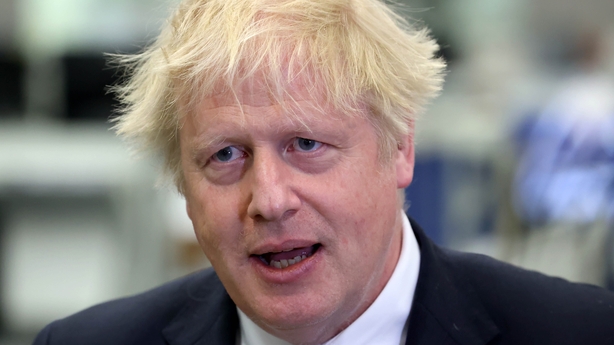
What alarmed Dublin the most was that unionists and Tory eurosceptics were arguing about consent in terms of sovereignty and were escalating their rhetoric around the European Court of Justice and its role in arbitrating on the Protocol.
"If, in the context of the Protocol," said one senior Irish source in 2021, "which doesn't impact on the sovereignty of Northern Ireland, people are arguing a cross-community vote is required, what does that mean for a border poll, which does impact on the sovereignty of Northern Ireland? By the same logic surely then people would say we need a cross-community vote on that too".
In other words, unionists could argue that Irish unity under the Good Friday Agreement would need the consent of unionism, not just the consent of a majority of the population.
In 2021 and 2022, when London was arguing more forcefully that the Protocol had to be replaced or substantially be re-written, the arguments of British officials engaged in on-off talks with the Commission, were more political than legal.
Put bluntly, if unionists cannot abide the Protocol’s arrangements then the institutions cannot function and the 1998 agreement is in peril.
"The nature of the problem in Northern Ireland," a senior British official said in May 2021, "is that if the two communities don't find ways of working together then that has political consequences for the Good Friday Agreement because of the way it was set up [in order] to try and bring the communities together".
As we know now, months of negotiation did end up with the Protocol being replaced (if you accept the UK interpretation) or having additional provisions (if you accept the EU’s interpretation) through the Windsor Framework.
Naturally, the Framework’s joint declaration of 27 February opens with London and Brussels both putting the Good Friday Agreement in lights.
"The European Commission and the government of the United Kingdom recall the full commitment of the European Union and of the United Kingdom to protecting the Good Friday or Belfast Agreement of 10 April 1998, including its subsequent implementation agreements and arrangements, in all its dimensions and in all its strands," the first paragraph states.
The broad flexibilities and exemptions on GB-NI trade, and the easements for consumers on everything from parcels to pets to seed potatoes, are framed as both sides giving equal weight to each other’s "legitimate interests" in protecting both the UK internal market and the EU’s single market.
While the Protocol and its consent provisions - ie, the 2024 Stormont vote - remain intact, the Windsor Framework borrows the Petition of Concern from the Good Friday Agreement as a mechanism that could allow unionists to object to particular EU goods directives being amended or updated when applying in Northern Ireland.
Whether it works or not remains to be seen, but it is clear that Brussels and London are looking to a bigger geopolitical prize in terms of cooperation that casts its gaze beyond the steeples of Fermanagh and South Tyrone.
No hard border
Throughout the past seven years the Irish Government’s emphasis on protecting North-South cooperation and the avoidance of a hard border prevailed. There is still no hard border, although cross border services will be badly hit by Brexit.
Unionists have complained that the EU uncritically adopted Dublin’s analysis of the Good Friday Agreement to their detriment (Arlene Foster accused Michel Barnier during that meeting in October 2018 of being Dublin’s "puppet").
How Ireland secured and then maintained EU support was a function of its membership of the club, Europe’s determination to stay united, and the preparation that Irish officials and diplomats made.
By contrast, when the leave vote won, the UK system was utterly unprepared for the impact Brexit would have on the island of Ireland, and was left scrambling to reconcile what became a hard Brexit with the promise not to return to the borders of the past.
The post-referendum chaos in Westminster, and the savage polarisation between eurosceptics and the DUP on one hand, and a confused centre, opposition and civil service on the other, did not help either.
The architects of the Good Friday Agreement, huddled in Castle Buildings that chilly April 25 years ago, could not have dreamed that the texts they were drafting would become such a central, defining and constraining feature of the constitutional earthquake brought about by the Brexit vote in 2016.
One of its signatories, Tony Blair, had only just promised to put Britain at the heart of Europe.







